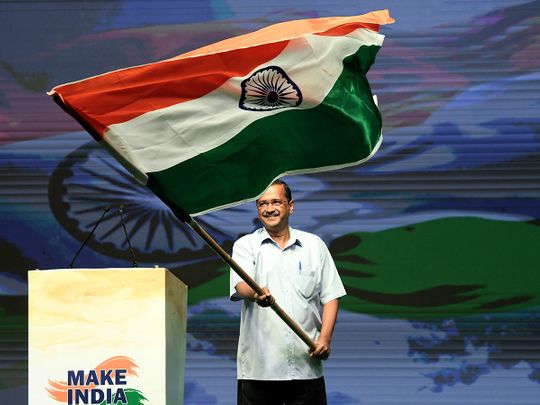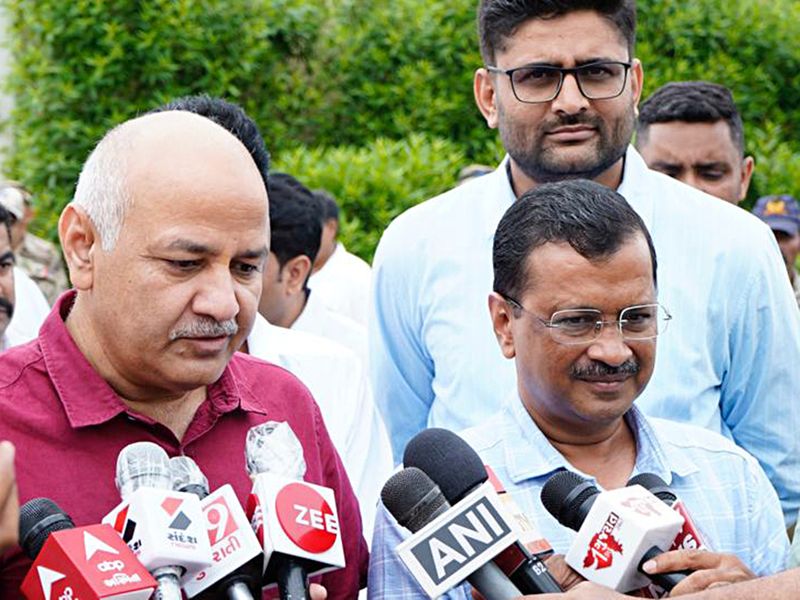
In India, Arvind Kejriwal, Aam Aadmi Party (AAP) founder and Delhi Chief Minister is something of a political puzzle but a very successful politician. The one thing you can say with certainty about Kejriwal, 54, is that he has boundless ambitions.
Kejriwal — from the days of his India Against Corruption (IAC) activism has never minded the saffron hue of his fellow travellers like Baba Ramdev and Sri Sri Ravishankar.
Kejriwal has also never hesitated about flexing his political muscle, booting out eminent civil society lawyer, Prashant Bhushan and civil society activist, Yogendra Yadav — both co-founders of AAP.
Having won the assembly elections in the state of Punjab in their second attempt, the only successful start up in Indian politics now fancy their chances in the upcoming Gujarat and Himachal Pradesh assembly elections for which Kejriwal has pulled out all the stops.
The AAP strategy is simple: go after and hoover up the votes of the enervated Congress party — India’s principal opposition party — in states like Gujarat which have a bi-polar polity and pitch themselves as the natural opposition to both Prime Minister Modi and the ruling Bharatiya Janata Party (BJP).
BJP recently tried their time-tested political move of unleashing the country’s enforcement agencies on Manish Sisodia, Delhi education minister and Kejriwal loyalist.
The Central Bureau of Investigation (CBI) raided Sisodia for eight hours after registering a case on the controversial excise policy of liquor of the Delhi government. The policy has since then been withdrawn.
A political opportunity
Unlike other political parties who seemed absolutely uncomfortable with the anti-corruption spotlight on them, the AAP seemed to revel in it and turned it in to a political opportunity to make project Kejriwal national — pitch him as an audacious opponent to Modi.
AAP claimed that the trigger for the CBI action was the BJP’s jealousy of Sisodia making it to the front page of the prestigious New York Times with the Delhi school model.
A livid BJP launched a mindless attack saying that the NYT piece was a “paid piece” — an advertorial. The NYT was forced to jump into the fray and clarify that it was not a paid piece and that their stories and columns were syndicated worldwide.
All of AAP leaders of any note including Sisodia were on message and script — all saying that it was BJP’s fear of Kejriwal versus Modi in 2024 that made the BJP resort to vendetta. The AAP had clearly anticipated action against Sisodia and decided to spin it as Kejriwal going national.

A gambler’s lucky streak
In 2014 when AAP was a newbie in politics, Kejriwal contested the Varanasi parliamentary election against Modi, positioning himself as the contender even then.
A Congress leader speaking to me for Gulf News displayed a reluctant admiration for Kejriwal, saying that he combined the chutzpah of the Haryanvi (Kejriwal is from Haryana) with a gambler’s lucky streak.
He listed that Kejriwal always kept out when the opposition was targeted by investigative agencies but now demands support.
“Kejriwal has never gone public on what he thinks of the ideology of Hindutva, never spoken for the beleaguered minorities and projects himself as Sangh-lite, yet the public is buying it,” a senior leader from Delhi added.
The Delhi CM now skilfully sidesteps Modi and the BJP after his earlier policy of direct personal attacks on the Prime Minister backfired. The AAP refuses to be pinned down on emotive Hindutva issues but says that its model of welfarism — the “Delhi model” on health and education works for all citizens.
Kejriwal is now pitching his Delhi model against the Gujarat model of the BJP. With barely two years to go for the big fight of the 2024 elections — watch this space.











